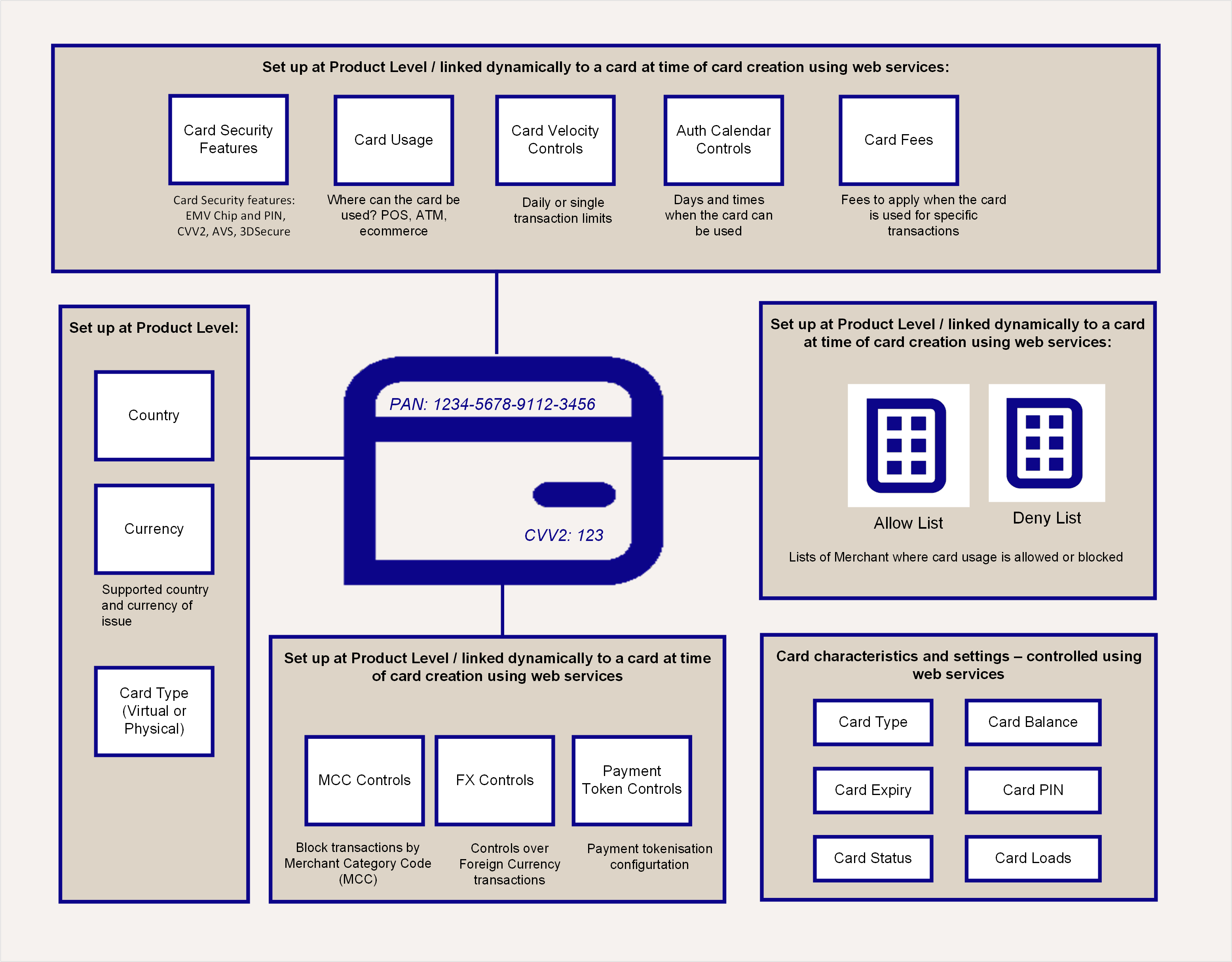Card Configuration
Thredd card configuration options help to ensure that the characteristics of your cards can be tailored to the needs of your service and include features to enhance the safety and security of your cards and reduce the risk of fraud. Card configuration options are applied during setting up of your Thredd card program. Configuration can be applied at a product level, across all your card products or to a specific card.
Thredd provides access to web services to enable you to dynamically change the configuration settings of your cards whenever needed.
Dynamic Card Controls
Dynamic card controls can be applied by setting up card usage groups and linking them to cards. See examples below:
|
Usage Group |
Velocity Group |
Auth Calendar Group |
|---|---|---|
|
Control how a card can be used. For example:
|
Restrict the frequency and/or amount at which the card can be loaded or unloaded. For example: £600 daily spending limit |
Control the dates and times when cards can be used. For example: prevent usage on Sabbath days and religious holidays. |
|
MCC Group |
FX Group |
Payment Token UsageGroup |
|---|---|---|
|
Control the type of merchants where the card can be used. The MCC is a four-digit number used by the Card Schemes to define the trading category of the merchant. For example: prevent card usage on gambling sites For a list of MCCs, see the EHI Guide > Merchant Category Codes. |
Control the rates for FX currency conversions if the purchase currency is different from the card's currency. |
Define configuration options specific to the provisioning of a digital payment token. |
Card Acceptor Lists
Card Acceptor (Allow and Deny) lists can be used to control at which merchant stores the card can be accepted (based on the merchant ID). You can use the ThreddAPI to add Merchant IDs to your Allow and Deny lists; you can dynamically link one or more cards to an acceptor list. For information, see the Physical Cards Guide > Card Usage Options.
For details of how to dynamically link acceptor groups to a card, using the Thredd REST API, see the Cards API Website > Managing Card Control Groups.
For details of how to dynamically link acceptor groups to a card, using the Thredd Web Services (SOAP API), seeWeb Services Guide (SOAP API) > Acceptor Lists Overview.
Combining Card Configuration Options
The figure below provides an overview of how card product controls work.

Figure: Card Configuration and Dynamic Card Controls
For information on how to set up and configure your card programme to support physical (printed) cards, see the Physical Cards Configuration Guide.
Dynamic CVV2
The Card Verification Value 2 (referred to by Visa as CVV2 and Mastercard as CVC 2) is a 3 digit code displayed on the back or front of the card. The cardholder must enter or provide the CVV2 during a card-not-present transaction, as a way of verifying that they have the card in their possession. Since the CVV2 is a static number, this makes it more susceptible to fraud.
With dynamic CVV2, the default CVV2 value linked to the card record is ignored; the CVV2 value is verified during transaction authorisation against another value which your systems dynamically supply to the cardholder (e.g., via their card app or SMS). This can improve the security of card-not-present transactions.
For more information, see the Dynamic CVV2 Guide.
Customised Card Numbers
You can use the Thredd API to provide a personalised user experience for your cardholders, offering them the ability to choose the last six digits of their card number. For more information, see the Cards API Website: Customised Card Numbers.